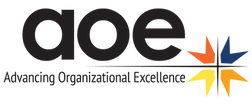The intersection of equity and sustainability in today’s market
- Kimberly Kayler

- Sep 6, 2022
- 4 min read
Updated: Feb 19, 2024

While consumer choice, societal pressure and a moral imperative resulted in a focus on Diversity Equity and Inclusion (DEI) programs for many organizations during the last few years, many others are just now feeling the pressure as the intersection of equity and sustainability are finding their way into requests for proposals. From the Federal Highway Administration Climate Challenge to the US Department of Transportation Strategic Plan on Climate and Sustainability, among countless other examples, organizations are detailing out how equity, resiliency and safety are key factors linked to achieving sustainable design, projects, communities and workplaces. And, they are asking our clients to respond with DEI statements and plans if they are to earn work.
Although AOE launched our DEI Practice Group more than two years ago, and our Sustainability Communications Practice Group earlier this year, we have noticed a huge change in the requests for assistance we are receiving the last few months, specifically, many organizations that dove into DEI programs are now struggling to determine what is next. The reason? In our opinion, many of the efforts were focused on training and were not tied to the strategic framework of the organization. Still others focused solely on recruiting activities, yet very little was done to address issues that create stronger retention of a diverse workforce. In contrast, experience has proven that a DEI strategy is essential to programming success. A DEI strategy should define the short-term and long-term goals, priorities and initiatives for the organization. The process provides direction on how to achieve these objectives, including:
Creating a DEI internal and external statement.
Continuous DEI educational programs for the team.
A DEI Communication plan that communicates the DEI mission/vision and strategy internally and externally; includes the onboarding process; and defines their digital brand to include DEI information on the website and in social media.
Designing a talent pipeline focused on increasing diversity in the hiring, promotion and succession planning process.
Listing the initiatives on which the firm decides to focus (based on the survey and data collection).
Defining metrics and creating a tracking process.

Still stuck on how to get started? AOE’s unique benchmark tool, designed specifically for technical industries and communities, helps organizations determine where they are related to the following areas:
Leadership Accountability: DEI is integrated into strategic objectives, vision and metrics.
Talent Integration and Strategy: DEI is recognized for generating high performing teams. Activities may include career development, mentoring, performance management, succession planning, training, as well as recruiting and hiring.
Operations Integration: AOE will measure policies and practices regarding how they reflect and reinforce DEI strategy.
Marketing/Marketplace/Community Integration: DEI strategies are integrated into marketing, marketplace as well as community stakeholder activities such as branding and corporate image, sales and marketing, community and marketplace relations, as well as supplier diversity.
The AOE tool goes far beyond measuring quotas and numbers—it also addresses DEI-related concepts including intent, language and visual messages, as well as how diversity, equity and inclusion are integrated into an organization from a strategic standpoint. Upon completion of the assessment, real-time data is provided including the degree to which the organization supports DEI and where they are in their journey (based on a proprietary maturity model). Feedback is provided along with a suggested roadmap to meet their DEI goals, which may include training such as implicit bias education, a branding audit or modification of recruiting activities. As the organization moves through the various phases of their DEI roadmap, AOE is with them every step of the way.
If you have yet to tackle making sense of DEI for your organization, please consider contacting us for a free conversation about what may make sense for your team.

Take the Quiz
Is DEI a part of your culture? Do you have a truly inclusive environment? Knowing where you are in the DEI journey is an important first step in designing your program. Saxum identified 10 questions to ask ourselves to get a clear picture of where your organization is and what your next steps should be.
Is our environment safe enough for everyone to feel like they belong?
Are we an employer of choice for BBIPOC (Black, Brown, Indigenous, People of Color)?
Who’s in the room and who’s trying to get in the room but can’t?
Is our organization a space where all ideas are heard?
How can we use our organization’s overall strength to our advantage in developing our DEI strategy?
Who will lead this effort, help develop benchmarks, hold the team accountable and ensure we are on track?
Who will be the stakeholders, advocates and benefactors of this change?
What are the resources necessary to implement and support a robust strategy?
How do we get everyone in our organization on board?
How long will it take before we see and feel change?
If you don’t have all the answers, that’s ok. This is a journey and AOE is here to help you every step of the way.
.png)